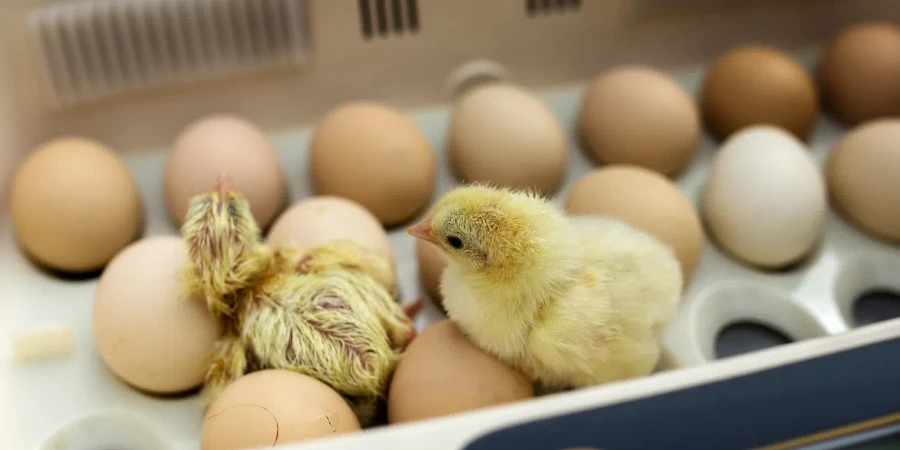In 2025, the global eggs market is projected to reach unprecedented heights, driving the need for efficient egg incubators. These devices are essential for optimizing hatching conditions, ensuring higher hatch rates, and supporting the scalability of poultry operations.
Table of Contents:
– Importance of Egg Incubators in Poultry Farming
– Key Features to Look for in an Egg Incubator
– Types of Egg Incubators and Their Benefits
– How to Ensure High Hatch Rates with Egg Incubators
– Trends and Innovations in Egg Incubator Technology
– Making an Informed Purchase Decision
Importance of Egg Incubators in Poultry Farming
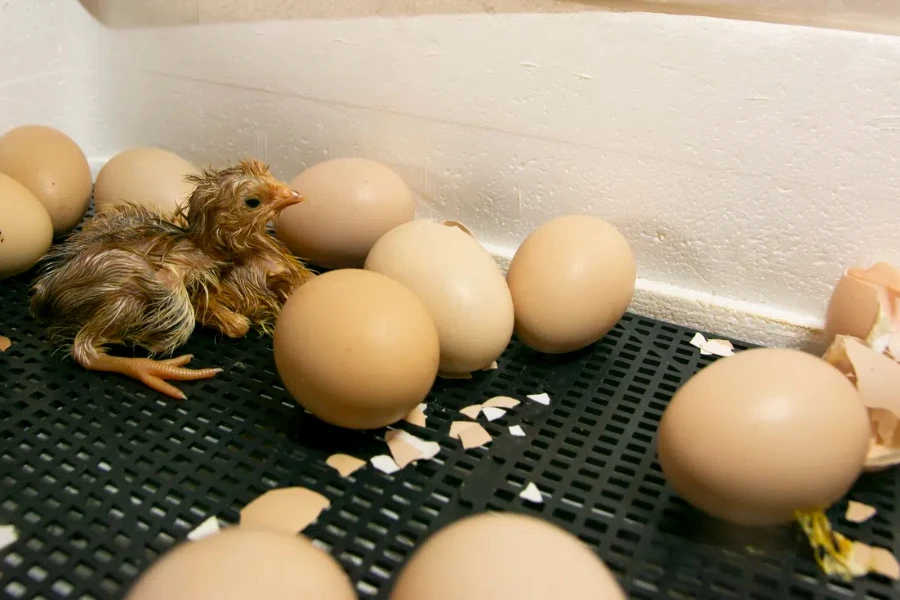
Egg incubators play a crucial role in modern poultry farming, significantly impacting productivity and efficiency. With the global eggs market projected to reach $130.70 billion in 2024, the demand for efficient egg incubation systems is on the rise. These devices ensure optimal conditions for hatching, which is essential for meeting the growing consumer demand for eggs.
The use of egg incubators allows for better control over the hatching process, leading to higher hatch rates and healthier chicks. This is particularly important in regions like China, where the eggs market is expected to generate $22.5 billion in revenue in 2024. By providing a stable environment, incubators reduce the risks associated with natural hatching, such as temperature fluctuations and predation.
Moreover, egg incubators contribute to the scalability of poultry operations. As the number of users in the eggs market is expected to reach 138.5 million by 2029, the ability to hatch large numbers of eggs efficiently becomes increasingly important. Incubators enable farmers to manage larger flocks and meet market demands more effectively, supporting the overall growth of the poultry industry.
Key Features to Look for in an Egg Incubator
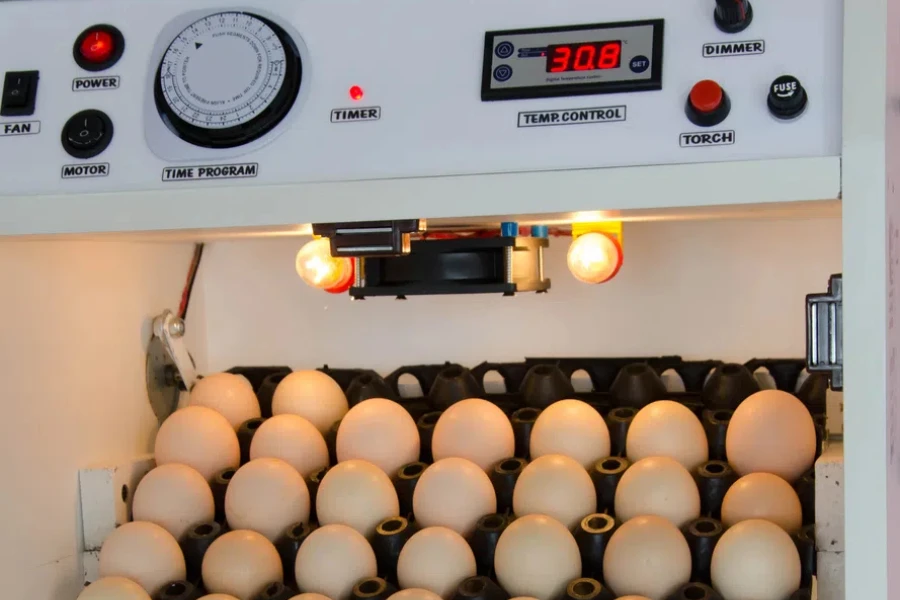
Temperature Control and Stability
Temperature control is a critical feature in egg incubators, as it directly affects the development of embryos. Modern incubators are equipped with advanced temperature regulation systems that maintain a consistent environment. This is essential for achieving high hatch rates, especially in markets like the United States, where the eggs market is projected to reach $2.32 billion in 2024.
Stability in temperature is equally important, as fluctuations can lead to developmental issues or embryo mortality. Incubators with digital thermostats and automatic temperature adjustments ensure that the internal environment remains within the optimal range. This technology is vital for maintaining the projected annual growth rate (CAGR) of 15.94% in the U.S. eggs market from 2024 to 2029.
In addition to maintaining a stable temperature, some incubators offer features like temperature alarms and backup power systems. These enhancements provide an extra layer of security, ensuring that the incubation process is not disrupted by external factors. This is particularly beneficial in regions with unstable power supplies, supporting the overall reliability of the incubation process.
Humidity Regulation
Humidity regulation is another essential feature of egg incubators, as it influences the moisture content within the eggs. Proper humidity levels are crucial for preventing dehydration of the embryos and ensuring successful hatching. Advanced incubators come with built-in hygrometers and automatic humidity control systems, which are vital for maintaining the projected market volume of $14.71 billion by 2029.
Maintaining the correct humidity levels throughout the incubation period is necessary to avoid issues such as sticky chicks or shell adhesion. Incubators with automatic humidity regulation can adjust the internal environment based on real-time readings, ensuring optimal conditions. This feature is particularly important in regions like the United Kingdom, where the eggs market is expected to grow at a CAGR of 12.96% from 2024 to 2029.
Some incubators also offer external water reservoirs and humidity trays, making it easier to manage and monitor humidity levels. These features provide convenience and precision, reducing the need for manual adjustments. This level of control is essential for achieving high hatch rates and supporting the growth of the global eggs market.
Automatic Egg Turning
Automatic egg turning is a key feature that mimics the natural behavior of a brooding hen, ensuring even development of the embryos. Regular turning prevents the embryos from sticking to the shell membrane, which can lead to deformities or mortality. This feature is crucial for maintaining the projected user penetration rate of 1.9% by 2029 in the global eggs market.
Incubators with automatic turning mechanisms can rotate the eggs at set intervals, ensuring consistent movement. This automation reduces the labor required for manual turning and minimizes the risk of human error. In markets like Australia, where the eggs market is expected to reach $48.94 million in 2024, automatic egg turning is a valuable feature for improving efficiency.
Advanced incubators offer programmable turning schedules and adjustable turning angles, providing flexibility to meet specific incubation needs. These features allow farmers to customize the incubation process based on the type of eggs being hatched. This level of customization supports the diverse requirements of the global poultry industry, contributing to the overall growth of the eggs market.
Size and Capacity
The size and capacity of an egg incubator are important considerations for poultry farmers, as they determine the number of eggs that can be incubated at once. Incubators come in various sizes, from small tabletop models to large commercial units, catering to different scales of operation. This flexibility is essential for meeting the diverse needs of the global eggs market, which is expected to reach a volume of 61.27 billion kg by 2029.
For small-scale farmers or hobbyists, compact incubators with a capacity of 10-50 eggs are ideal. These models are easy to manage and require less space, making them suitable for limited operations. In contrast, large commercial incubators can hold thousands of eggs, supporting the scalability of industrial poultry farms. This scalability is crucial for regions like China, where the eggs market is projected to generate $22.5 billion in revenue in 2024.
Choosing the right size and capacity also involves considering the available space and the specific needs of the operation. Some incubators offer modular designs, allowing farmers to expand their capacity as needed. This adaptability supports the growth of the poultry industry, enabling farmers to meet increasing market demands efficiently.
Energy Efficiency
Energy efficiency is a critical feature for egg incubators, as it impacts operational costs and environmental sustainability. Modern incubators are designed to consume less power while maintaining optimal incubation conditions. This efficiency is essential for supporting the projected annual growth rate (CAGR) of 8.17% in the global eggs market from 2024 to 2029.
Energy-efficient incubators use advanced insulation materials and low-power components to reduce energy consumption. These features help lower electricity bills and minimize the carbon footprint of poultry operations. In markets like the Netherlands, where the eggs market is expected to grow at a CAGR of 15.71% from 2024 to 2029, energy efficiency is a key consideration for sustainable growth.
Some incubators also offer energy-saving modes and programmable timers, allowing farmers to optimize power usage. These features provide additional control over energy consumption, making it easier to manage costs. This focus on energy efficiency supports the overall sustainability of the poultry industry, contributing to the long-term growth of the global eggs market.
Types of Egg Incubators and Their Benefits
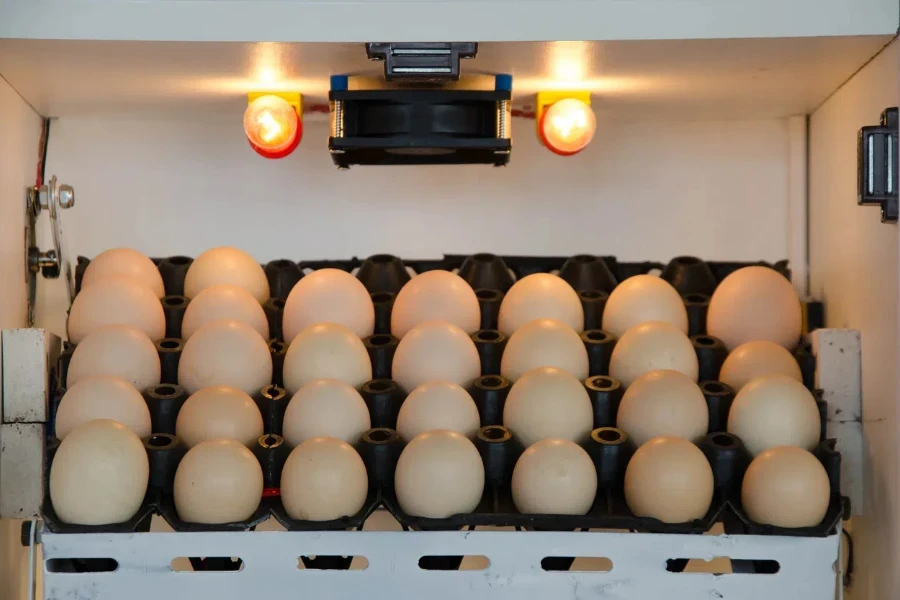
Still Air Incubators
Still air incubators are a basic type of incubator that relies on natural air circulation to maintain temperature and humidity. These incubators are typically more affordable and easier to use, making them suitable for small-scale operations. Despite their simplicity, still air incubators can achieve good hatch rates when managed properly, supporting the projected market volume of $14.71 billion by 2029.
One of the main benefits of still air incubators is their low cost, which makes them accessible to hobbyists and small farmers. These incubators are also less complex, requiring minimal maintenance and technical knowledge. This simplicity is advantageous in regions with limited access to advanced technology, contributing to the overall growth of the eggs market.
However, still air incubators require careful monitoring and manual adjustments to ensure optimal conditions. Users must regularly check temperature and humidity levels and make necessary adjustments. This hands-on approach can be time-consuming but provides valuable experience in managing the incubation process, supporting the development of skills in the poultry industry.
Forced Air Incubators
Forced air incubators use fans to circulate air, ensuring even distribution of temperature and humidity throughout the incubator. This type of incubator is more efficient and reliable, providing consistent conditions for embryo development. Forced air incubators are ideal for larger operations, supporting the scalability of the poultry industry and the projected user penetration rate of 1.9% by 2029.
The main advantage of forced air incubators is their ability to maintain uniform conditions, which is crucial for achieving high hatch rates. The constant air circulation prevents hot or cold spots, ensuring that all eggs receive the same level of care. This feature is particularly important in markets like the United States, where the eggs market is expected to reach $2.32 billion in 2024.
Forced air incubators also offer advanced features such as digital controls, automatic turning, and humidity regulation. These enhancements provide greater control over the incubation process, reducing the risk of human error. This level of precision supports the overall efficiency and productivity of poultry operations, contributing to the growth of the global eggs market.
Cabinet Incubators
Cabinet incubators are large, commercial-grade incubators designed to hold hundreds or thousands of eggs. These incubators are equipped with advanced features such as automatic turning, digital controls, and precise temperature and humidity regulation. Cabinet incubators are essential for industrial poultry farms, supporting the scalability needed to meet the projected market volume of 61.27 billion kg by 2029.
One of the main benefits of cabinet incubators is their high capacity, which allows for the incubation of large numbers of eggs simultaneously. This scalability is crucial for meeting the growing demand for eggs in regions like China, where the market is projected to generate $22.5 billion in revenue in 2024. Cabinet incubators also offer modular designs, allowing farmers to expand their capacity as needed.
In addition to their high capacity, cabinet incubators provide advanced control over the incubation environment. Features such as programmable settings, alarms, and backup systems ensure that optimal conditions are maintained at all times. This level of control is essential for achieving high hatch rates and supporting the overall efficiency of large-scale poultry operations, contributing to the growth of the global eggs market.
How to Ensure High Hatch Rates with Egg Incubators
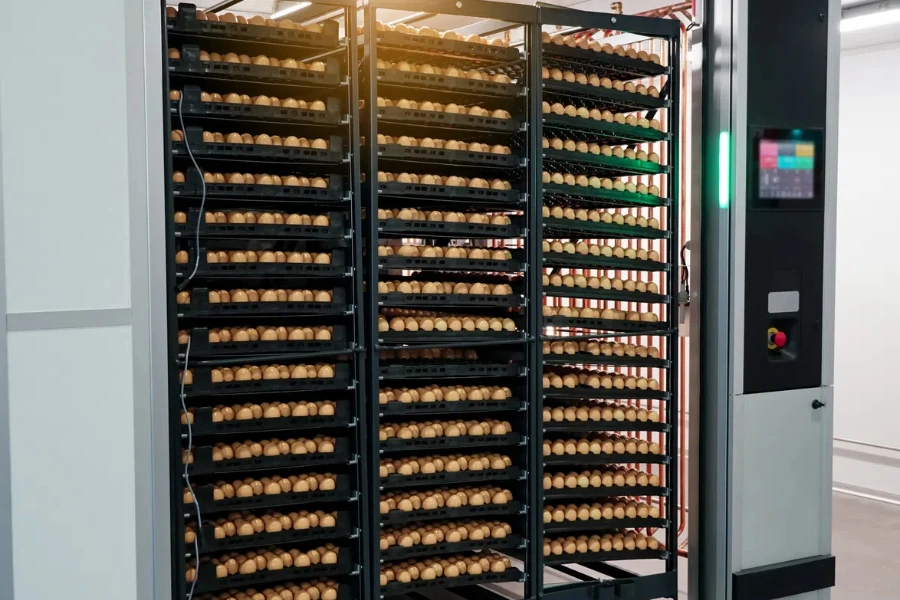
Optimal Temperature and Humidity Settings
Maintaining the correct temperature and humidity levels is crucial for achieving high hatch rates in egg incubators. The ideal temperature for most poultry eggs is around 99.5°F (37.5°C), with slight variations depending on the species. Humidity levels should be kept at approximately 50-55% during the initial incubation period and increased to 65-70% during the final days before hatching. Utilizing digital thermometers and hygrometers can help ensure these parameters are consistently met.
Temperature fluctuations can significantly impact embryo development, leading to lower hatch rates. It is essential to use incubators with precise temperature control systems, such as proportional integral derivative (PID) controllers. These systems adjust the heating elements’ power output to maintain a stable temperature, reducing the risk of overheating or underheating. Additionally, incubators with built-in alarms can alert users to any deviations from the set temperature range.
Humidity control is equally important, as improper levels can cause dehydration or excessive moisture in the eggs. Many modern incubators come equipped with automatic humidity control systems that regulate water levels and airflow. For manual systems, regularly monitoring and adjusting water trays or using humidity pads can help maintain the desired humidity levels. Ensuring proper ventilation within the incubator also aids in maintaining consistent humidity and temperature.
Regular Maintenance and Cleaning
Regular maintenance and cleaning of egg incubators are vital to prevent bacterial contamination and ensure optimal performance. Before each incubation cycle, thoroughly clean the incubator using a mild disinfectant solution to remove any residual dirt or pathogens. Pay special attention to areas such as water trays, fans, and heating elements, as these can harbor bacteria and mold.
Routine maintenance includes checking and calibrating temperature and humidity sensors to ensure accurate readings. Inspect the incubator’s mechanical components, such as fans and motors, for any signs of wear or malfunction. Lubricate moving parts as needed to prevent mechanical failures during the incubation process. Regularly replacing air filters can also improve air quality and reduce the risk of contamination.
In addition to cleaning and maintenance, it is essential to perform periodic deep cleaning and disinfection of the incubator. This process involves dismantling the incubator, cleaning each component individually, and using a stronger disinfectant to eliminate any persistent pathogens. Allow all parts to dry completely before reassembling the incubator to prevent moisture buildup and potential mold growth.
Proper Egg Handling and Placement
Proper handling and placement of eggs within the incubator are critical for maximizing hatch rates. Handle eggs with clean hands or gloves to prevent transferring oils or contaminants to the eggshells. Store eggs in a cool, stable environment before incubation, ideally at temperatures between 55-65°F (13-18°C) and a relative humidity of 70-75%.
When placing eggs in the incubator, ensure they are positioned with the larger end facing up, as this orientation allows the embryo to develop correctly. Use egg trays or racks designed to hold eggs securely and provide adequate spacing for airflow. Overcrowding can lead to uneven temperature distribution and hinder proper ventilation, negatively impacting hatch rates.
Regularly turning the eggs during incubation is essential to prevent the embryo from sticking to the eggshell and to promote even development. Automatic egg turners can simplify this process by rotating the eggs at regular intervals. If manual turning is required, gently rotate the eggs at least three times a day, ensuring consistent and even turning throughout the incubation period.
Trends and Innovations in Egg Incubator Technology
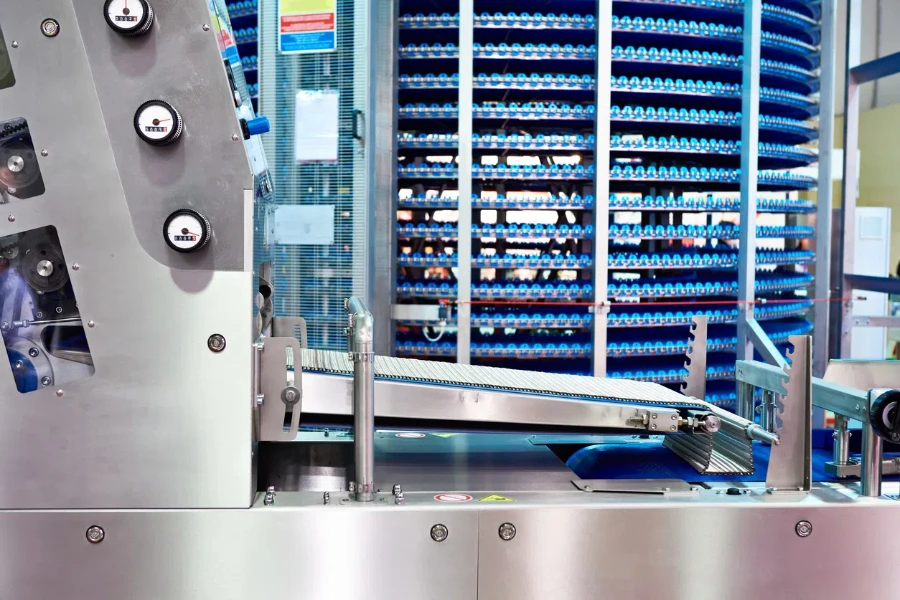
Advanced Temperature and Humidity Control Systems
Recent advancements in egg incubator technology have focused on improving temperature and humidity control systems. Modern incubators now feature sophisticated sensors and controllers that provide precise regulation of environmental conditions. For instance, some incubators use PID controllers that continuously adjust the heating elements’ power output to maintain a stable temperature. These systems can significantly reduce temperature fluctuations, leading to higher hatch rates.
Humidity control has also seen significant improvements, with many incubators now equipped with automatic humidity regulation systems. These systems use sensors to monitor humidity levels and adjust water reservoirs or humidifiers accordingly. Some advanced models even incorporate ultrasonic humidifiers, which produce fine mist to maintain optimal humidity levels without excessive moisture buildup. These innovations ensure that eggs are incubated in the most favorable conditions, enhancing embryo development and hatch rates.
Integration of IoT and Remote Monitoring
The integration of the Internet of Things (IoT) and remote monitoring capabilities has revolutionized egg incubator technology. IoT-enabled incubators can connect to the internet, allowing users to monitor and control incubation parameters remotely via smartphones or computers. This connectivity provides real-time data on temperature, humidity, and other critical factors, enabling users to make timely adjustments and ensure optimal conditions.
Remote monitoring systems often include alerts and notifications for any deviations from the set parameters. For example, if the temperature drops or humidity levels rise unexpectedly, the system can send an alert to the user’s device, prompting immediate action. This feature is particularly beneficial for large-scale operations where constant supervision may not be feasible. By leveraging IoT technology, users can achieve higher hatch rates and reduce the risk of incubation failures.
Energy Efficiency and Sustainability
Energy efficiency and sustainability have become key considerations in the development of new egg incubator technologies. Manufacturers are increasingly focusing on designing incubators that consume less energy while maintaining optimal performance. For instance, some incubators now use energy-efficient heating elements and insulation materials that reduce heat loss and minimize energy consumption. These innovations not only lower operational costs but also contribute to environmental sustainability.
In addition to energy efficiency, there is a growing emphasis on using eco-friendly materials and manufacturing processes. Some incubators are now made from recyclable or biodegradable materials, reducing their environmental impact. Furthermore, advancements in renewable energy integration, such as solar-powered incubators, offer sustainable alternatives for regions with limited access to electricity. These trends reflect a broader shift towards more sustainable and environmentally responsible practices in the egg incubation industry.
Making an Informed Purchase Decision
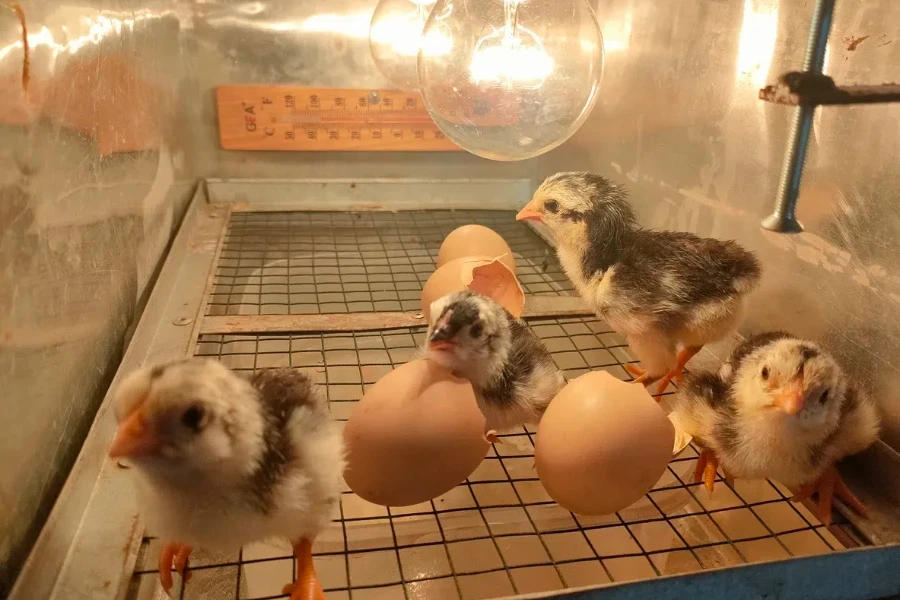
Egg incubators are indispensable for modern poultry farming, enabling higher productivity, healthier chicks, and scalability to meet growing global demand. By ensuring precise temperature, humidity control, and automation, these devices optimize hatch rates and support efficient operations. With advancements like IoT integration and energy-efficient designs, egg incubators are set to drive innovation and sustainability in the poultry industry, shaping its future growth.
